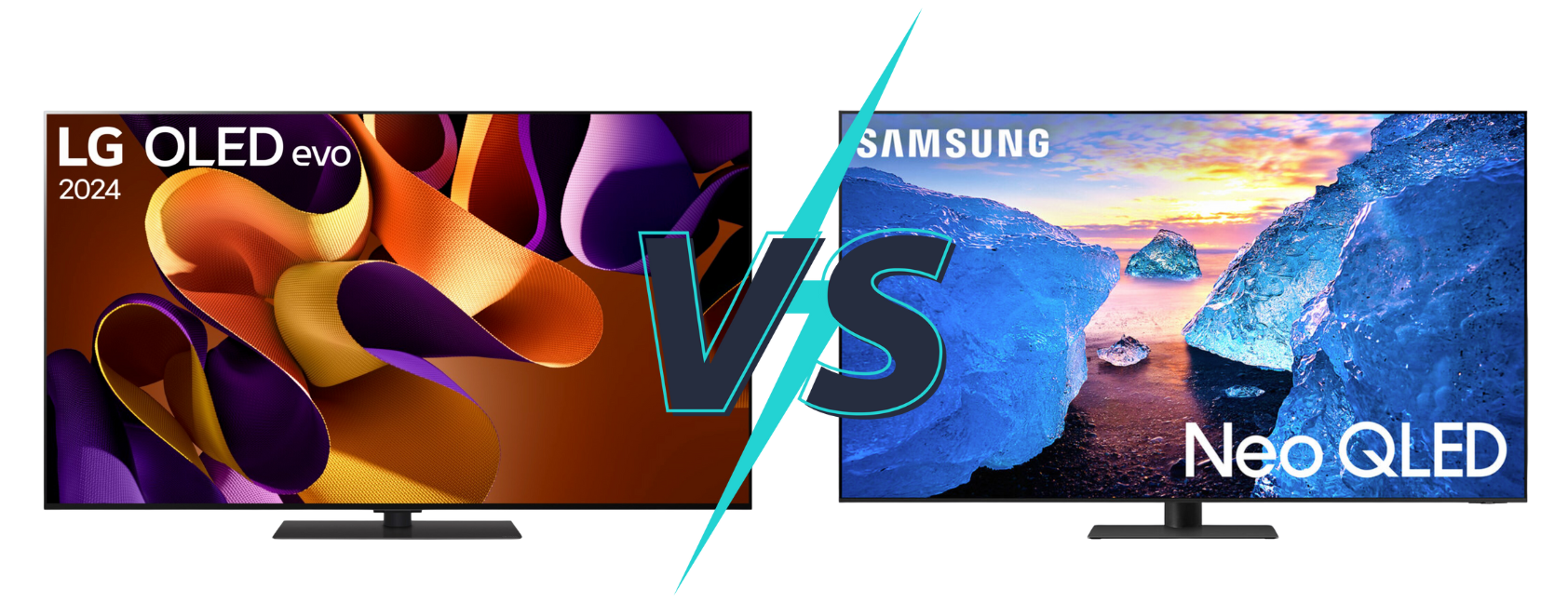OLED or LED TV: How do these TV models differ?
When looking for a new TV, you will inevitably be confronted with different standards. Knowing the advantages and disadvantages of each technology can make your purchase decision much easier. That’s why we explain the main features here with regard to the choice of picture technology and provide answers to the question: OLED or LED TV?
In order not to go beyond the scope of this article, we will only look at the two most common forms of technology today, LED-LCD and OLED. We will also spare ourselves further details on the individual subtypes and development stages of these technical approaches.
For more information, we therefore recommend that you visit our Wiki. There, in the “Video” section under “TV technology“, we provide a much more detailed insight into the panel types, including their technical structure and specific features.

What is different about OLED and LED-LCD TVs?
The primary and biggest difference between the two technologies is the fact that TVs with OLED technology can do without an additional LED layer in the housing. Why is this the case? In contrast to models that rely on light sources – today diodes and mini-diodes – to illuminate the LCD layer including the color filters, OLED TVs have the advantage of self-illumination.
This means that a picture cell can emit light independently and does not have to be illuminated separately by an LED matrix. This results in three major advantages over backlit TV sets.
OLED or LED: one advantage lies in the contrast

The brightness of self-illuminating pixels can be adjusted as required. The TV’s algorithm handles dark areas by dimming the pixels accordingly or switching them off completely. This results in a very high contrast range.
Marketing departments of large TV manufacturers take advantage of this fact and have been advertising an infinite contrast ratio ever since. Of course, OLEDs also have a verifiable static and dynamic contrast. Mathematically speaking, however, the darkest reference value must be above the zero value, otherwise the calculation will fail.
More precise illumination of content
By fully switching off the pixels, OLED televisions avoid a typical problem of models with backlighting. Depending on the type of illumination, more or less scattered light occurs and negatively affects the display of contours of bright objects in dark areas of the picture. Marginal areas over-illuminate and appear blurred to the viewer.
If the illumination does not follow the movement of the object quickly enough, the edges can also appear darkened and thus distort the image. Large image areas that should actually be dark or completely black tend to appear gray and foggy.
Narrower due to reduced depth
As the elimination of the illumination construction saves an entire level in the production process, OLED televisions can be manufactured visibly thinner and thus achieve comparatively low overall depths. This aspect is particularly advantageous if the TV is to be wall-mounted – ideally with a slim-fit bracket – and the appearance is to remain as unobtrusive as possible.
OLED televisions and their downsides

Despite the best picture quality, OLEDs also have some disadvantages that you should be aware of when buying. In our opinion, the most important counter-argument can be a significant brightness deficit compared to LED-LCD TVs. So don’t be impressed by the manufacturers’ sometimes utopian figures. Typically, the brightness performance figures refer to the maximum possible luminosity within a small section of the screen and are therefore only of limited significance.
Much more important for good visibility – especially in bright, light-flooded rooms – is the full-surface luminance potential of a screen. Due to the relatively high heat development compared to backlit technology, OLED models still come out on the short end of the stick in this discipline.
In practice, this is reflected in the automatic brightness limiter, but also has a general effect on light output. In direct comparison to LED LCDs, self-illuminating pixels cannot keep up in terms of brightness across the entire screen surface. Depending on the model, even moderate lighting conditions are enough to make it much harder to see details. Fine contrasts in particular are often not displayed brightly enough.
Organic material is subject to wear and tear
The technology is also subject to natural wear and tear. Over the course of its service life, this leads to a decrease in light output and an increasing risk of burn-in. Thanks to various maintenance functions, manufacturers have been able to make progress in recent years and at least delay the occurrence of this problem. However, burn-in has not been completely removed from the agenda and is still being discussed today.
Depending on the features and price range, current OLEDs in particular can beconsiderably more expensive. Above the 65-inch size in particular, a corresponding model can be really expensive from the mid-range upwards and can easily break the €2000 mark. In general, the price-performance ratio is therefore more on the side of conventional lighting technology.
If you have any suggestions of your own on this topic or think that we have overlooked something important, please leave us a comment in the comments section. We welcome any kind of constructive feedback.







